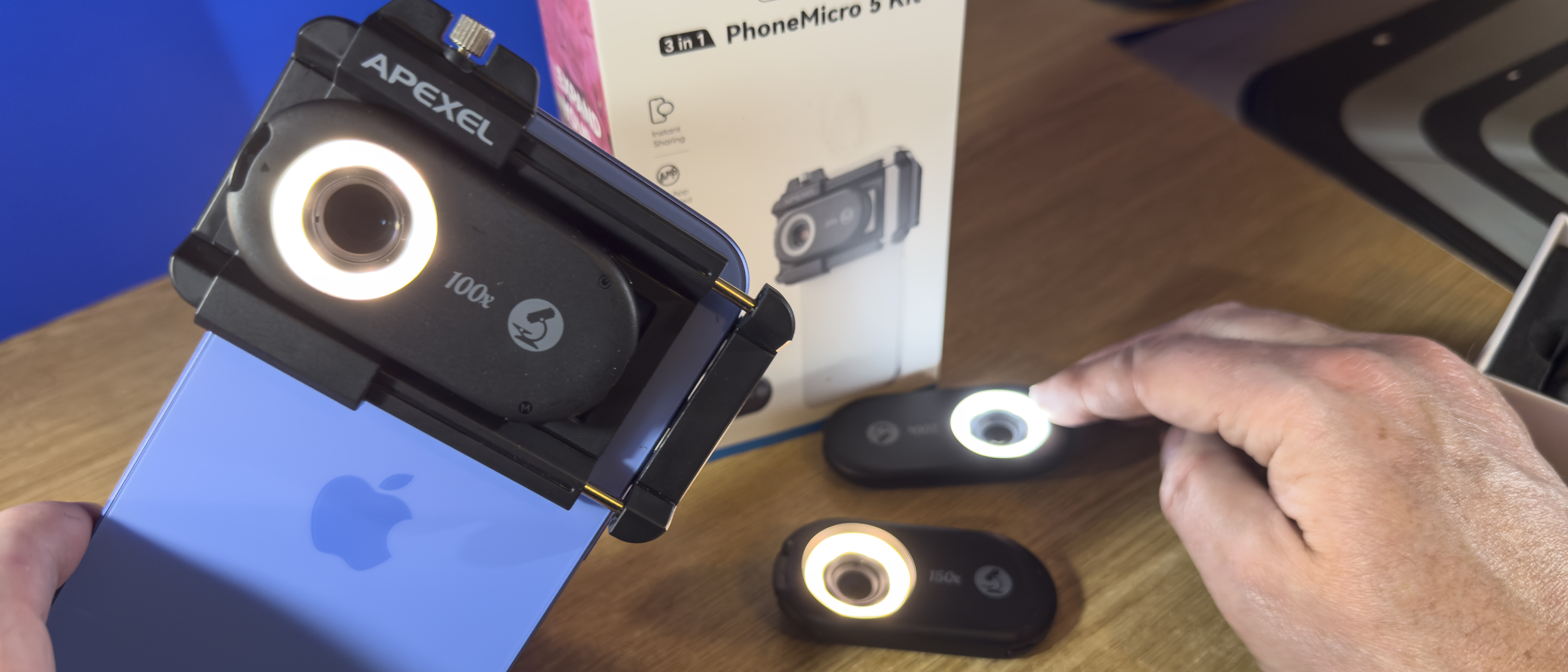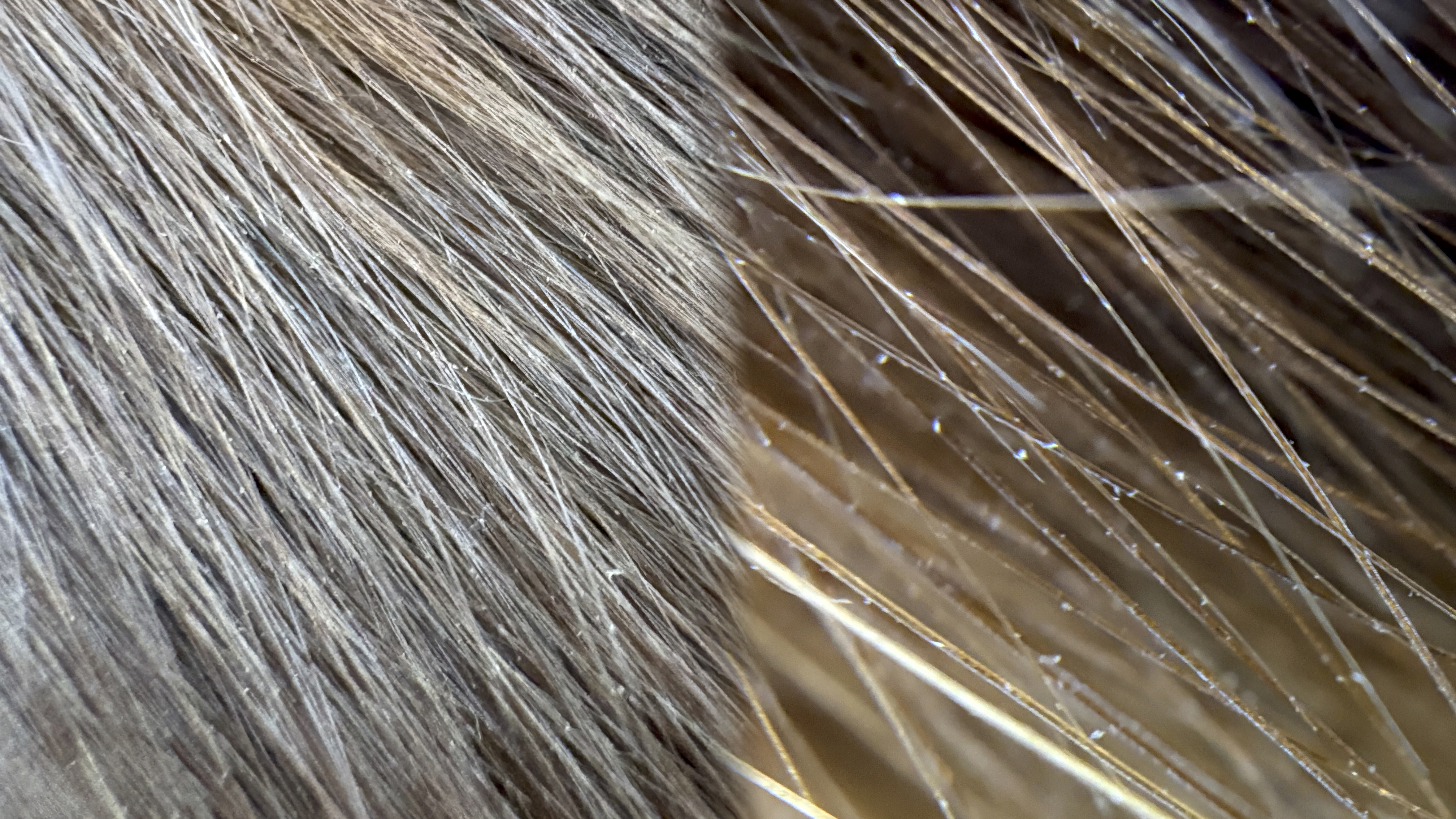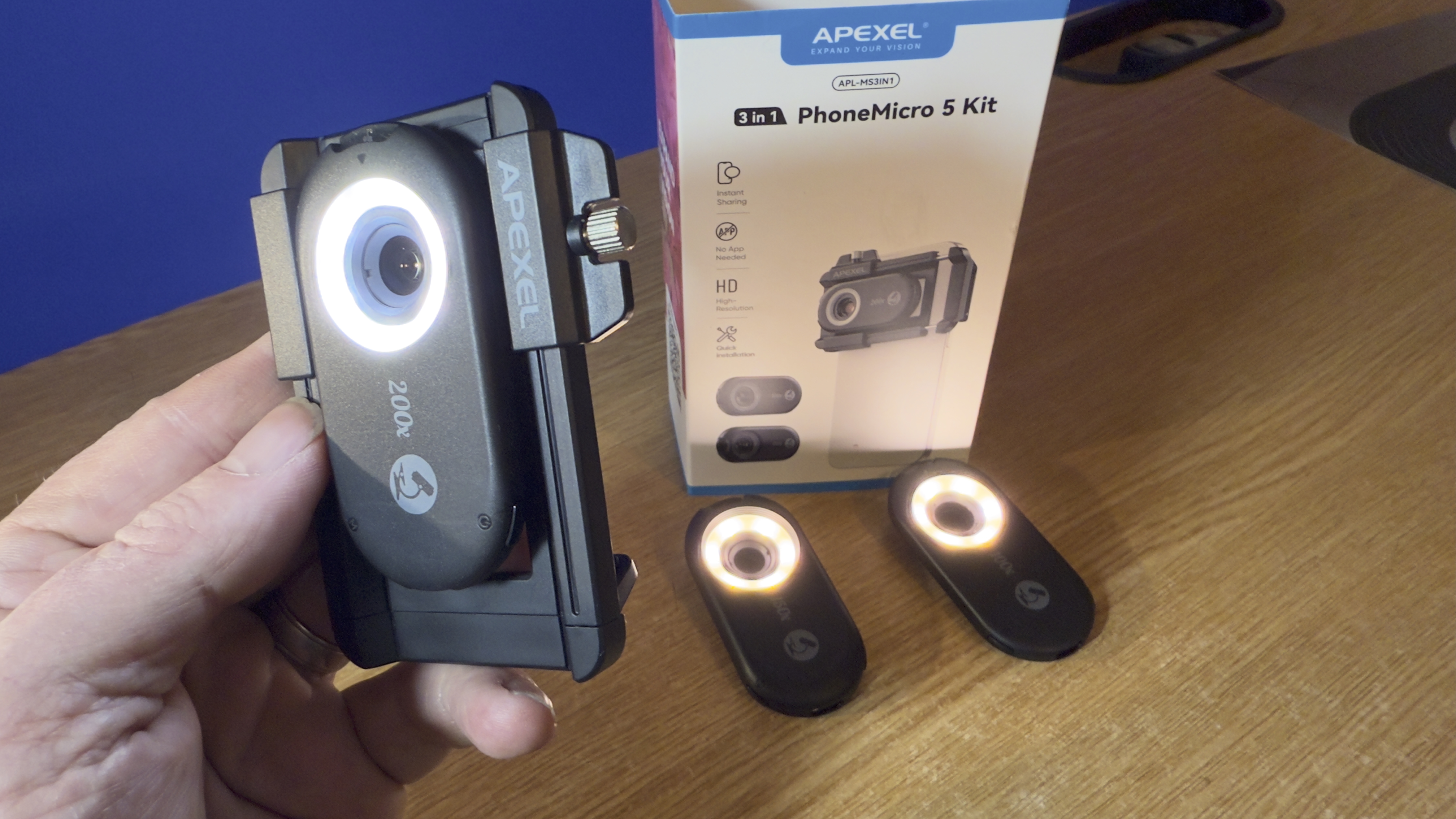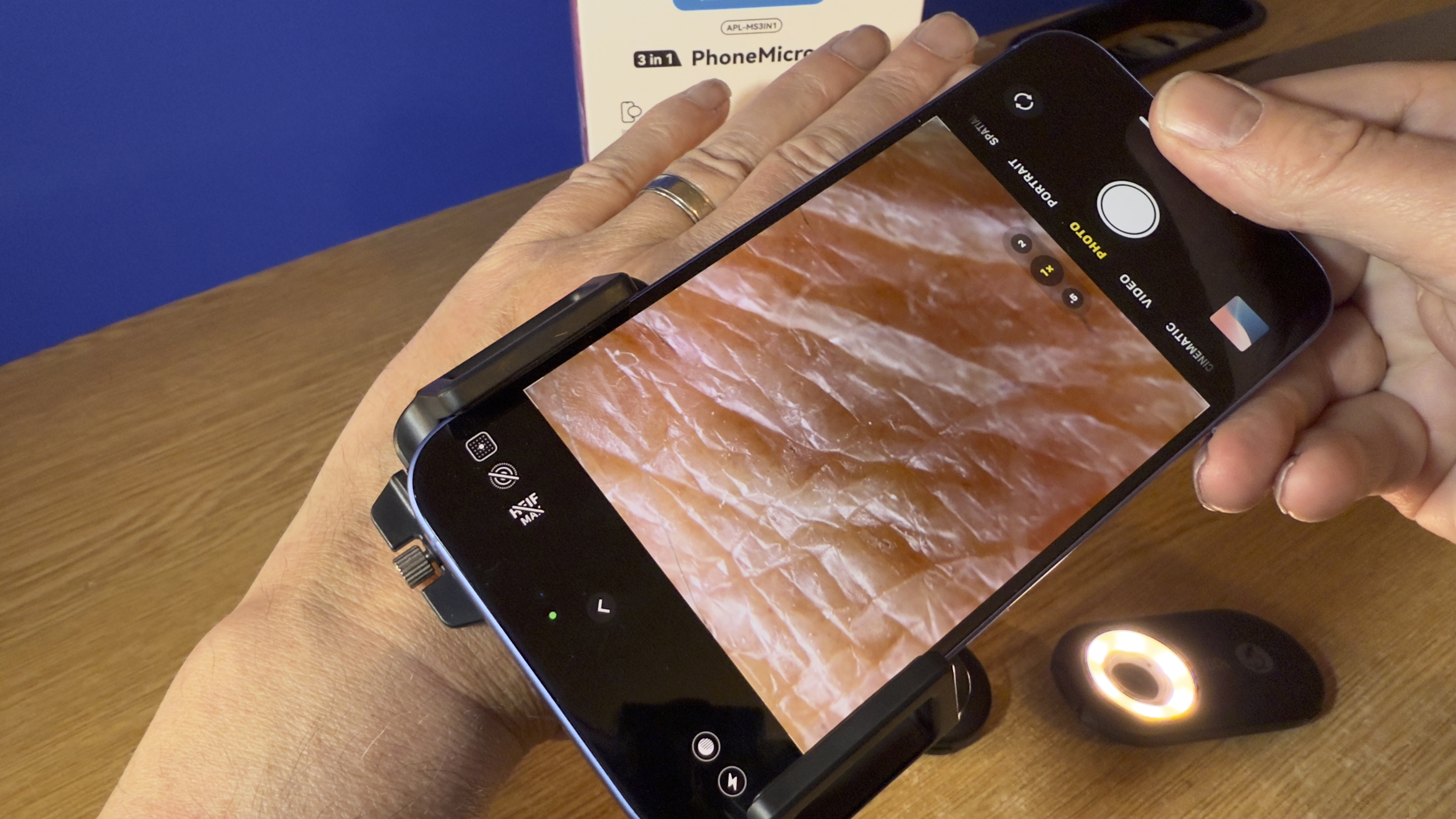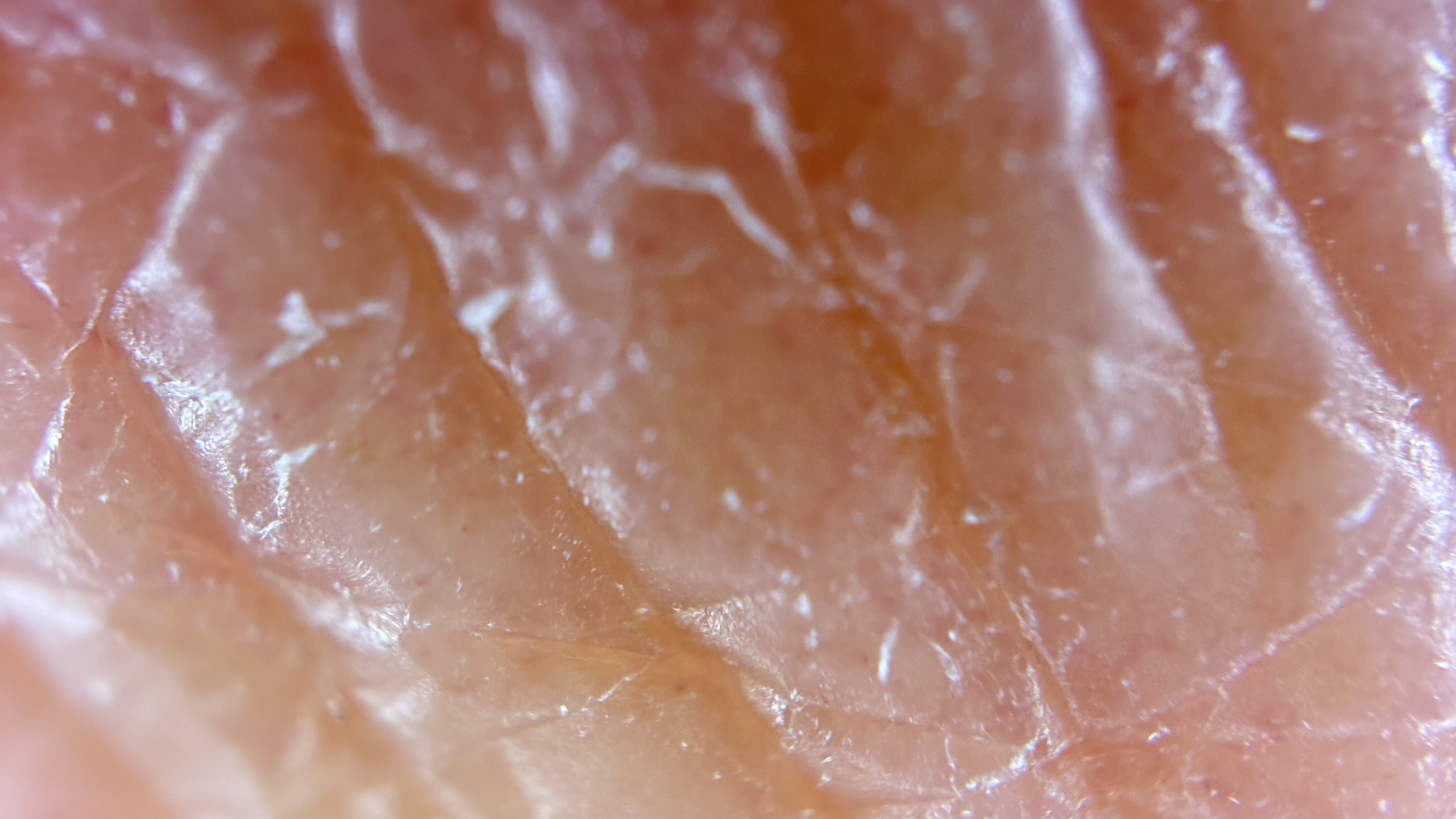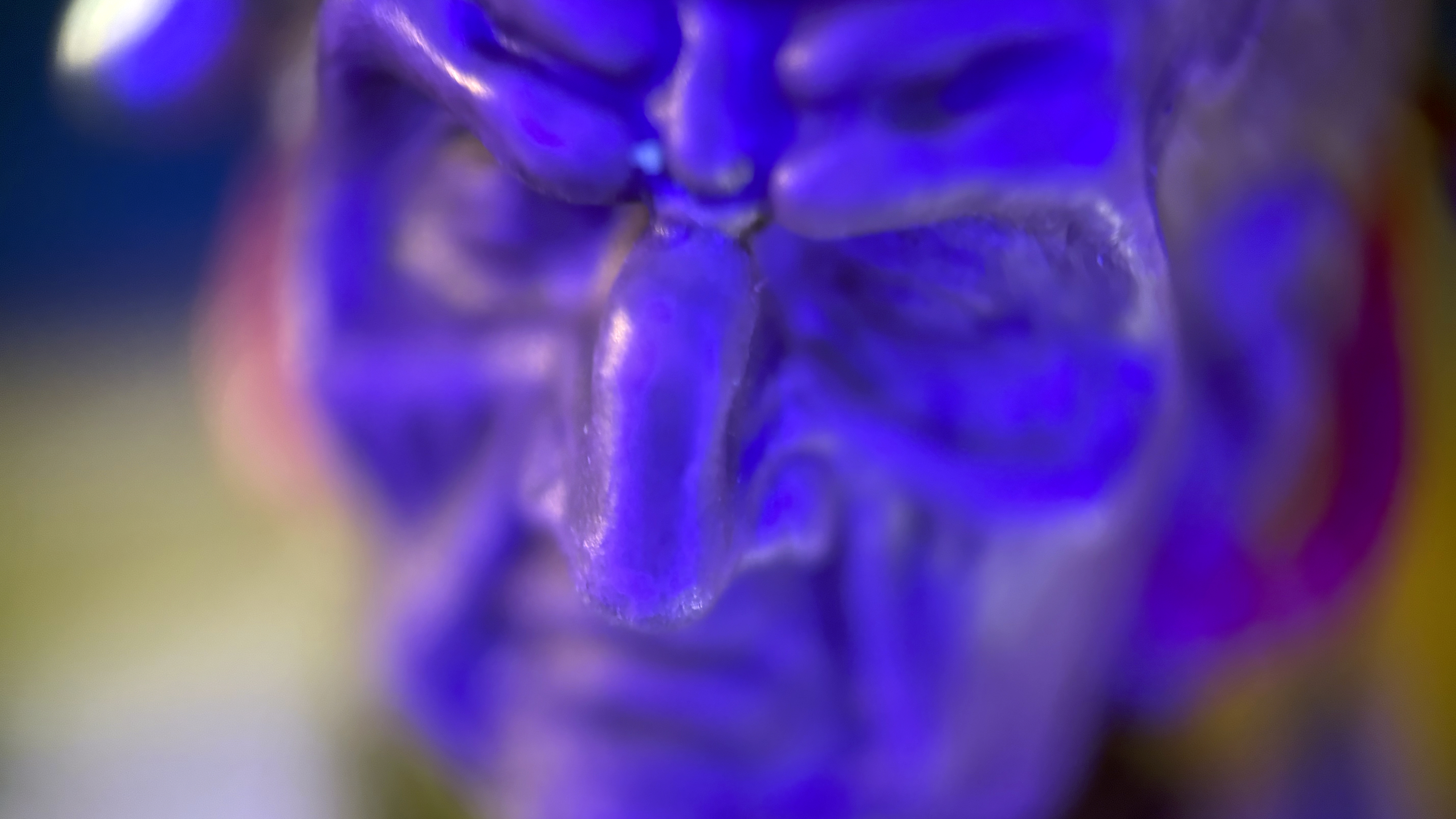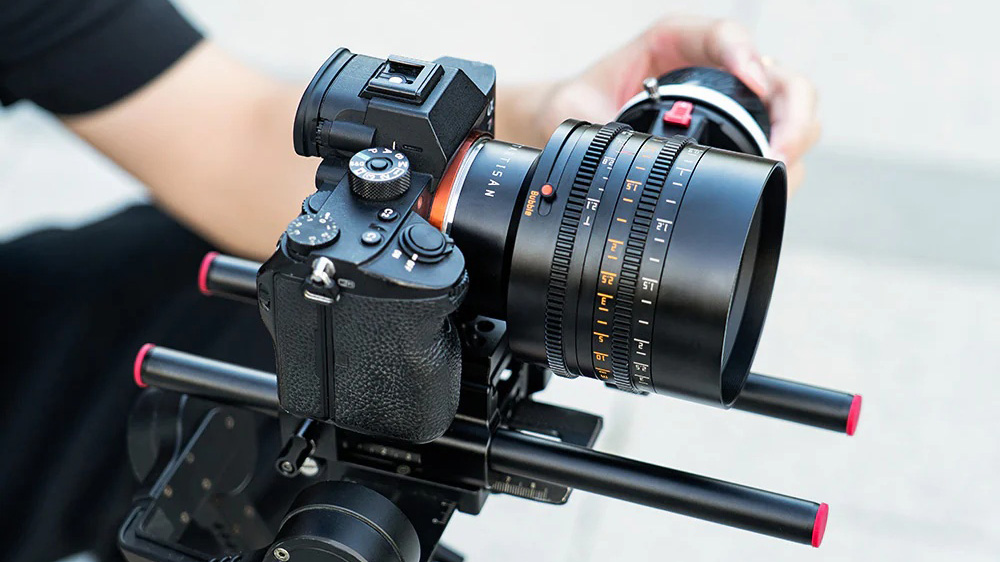Digital Camera World Verdict
The PhoneMicro5 3-in-1 Smartphone Microscope Kit provides a relatively affordable way to have closer encounters with flora and fauna, as well as capturing photos of fascinating shapes, patterns and textures in everyday objects such as the woven texture of paper or the strands of hair on your pet. The 100x lens in this kit also enables you to tease out tiny details in product photos while providing a delicate background bokeh. If you want to create a series of shots that’s different to your usual styles and topics then this marvelous set of microscopic lenses are worth purchasing.
Pros
- +
Fits most smartphones
- +
Easy to install
- +
Illuminates your macro subject
- +
Up to 200x magnification
Cons
- -
Clip mount can clash with some phone buttons
- -
Supplied sticky pad required make lens level
Why you can trust Digital Camera World
As an iPhone photographer I enjoy the using the Apple Camera apps’s Macro option to capture close-ups of a wide range of subjects. Regardless of which lens I choose my iPhone will automatically switch to the .5x 13mm Ultra Wide Camera if it detects that my subject is in close proximity to the iPhone. A flower-shaped icon appears, indicating that the iPhone is now shooting in Macro mode on the Ultra Wide lens. This enables me to capture effective macro shots of textures, creatures or products. However on my iPhone 16 Plus the .5x Ultra Wide Camera is only 12 MP whereas the main 1x Camera captures a 24 MP picture. So when shooting in Macro mode I can only capture a smaller 12 MP picture on my iPhone 16 Plus.
Another challenge that smartphone users face when shooting macro pictures is getting close enough to their subject without casting the device’s shadow on the subject. The Apexel PhoneMicro 5 Kit overcomes the shadow problem by using a tiny LED ring light to illuminate your subject - even if the smartphone’s lens is placed directly against a surface such as a piece of paper or the back of your hand.
The PhoneMicro 5 Kit also lets you magnify your subject more powerfully than you can with a smartphone’s lens by offering three microscope strength lenses that range between 100x, 150x and 200x magnification. Although most of the components of the Apexel PhoneMicro 5 Kit are constructed of plastic, its lenses are glass and enable it to capture more clarity and edge-to-edge sharpness than iPhone and Android models. Until this review I’d not encountered an Apexel smartphone lens product but like the company Moment with its T-Series of lenses, Apexel produce a wide range of lenses that expand your smartphone’s shooting capabilities. Whereas Moment only offer a 10x Macro lens, Apexel push the boundaries from macro to micro by offering up to 200x magnification.
Another key difference between Moment and Apexel is the way the lenses are attached to your smartphone. With Moment you need to buy a smartphone specific case so that you can attach a Moment lens to the case’s mounting connector. This means that if you change your phone model you’ll need to purchase a new case. With Apexel lens kits such as the PhoneMicro 5 you can attach them via a spring-mount so they will fit most smartphone models. I was able to easily attach the PhoneMicro 5 to both an iPhone 16 Pro and a chunkier iPhone 16 Plus for this review.
Apexel PhoneMicro 5 Kit: Specifications
Lenses: 100x, 150x and 200x. Equipped with CPL Polariser.
LED: 3 brightness levels, warm and cool color temperature and UV Light.
Battery life: 5.5 hours
The best camera deals, reviews, product advice, and unmissable photography news, direct to your inbox!
USB: Type C
Phone compatibility: Universal
Apexel PhoneMicro 5 Kit: Price and availability
You can pick up the Apexel PhoneMicro 5 Kit for $99 from Amazon in the US, and from Amazon in the UK for £79.99
The Apexel PhoneMicro 5 3-in-1 kit ships with the 100x, 150x and 200x microscopes but to save cash you can buy the microscope modules (with a quick-mount smartphone stretch clip) separately. If I had to pick just one microscope I’d go for the 200x version as this dramatically increases the detail in macro/micro photos. The 150x microscope is only $5 cheaper so you may as well pay a little extra to see a lot more macro/micro detail! Mind you I also like the bokeh produced by the 100x lens when shooting products/toys so buying the lenses as a 3-in-1 bundle gives you the lot for around half the price of buying them individually.
Apexel PhoneMicro 5 Kit: Design & Handling
The Apexel PhoneMicro 5 Kit ships in a compact branded card box that slides open to reveal a black foam insert that safely stores a quick-mount smartphone stretch clip and three oval-shaped quick-mount microscopes. There’s also a canvas bag in which you can transport the box’s contents when you’re out on a shoot. The quick-mount stretch clip has a spring that you need to pull to extend the mount to fit the width of your smartphone. I attached it to my iPhone 16 Plus which is a rather wide device. However the springed clip had no trouble stretching far enough to clamp the microscope mount to my iPhone.
Once the spring-mounted stretch clip has been firmly clamped to your smartphone you simply clip one of the three black plastic microscope modules into the mount. You can unlock the mount’s textured screw head and then slide the attached microscope module left or right until it is directly above your smartphone’s main camera and then twist the screw head to secure the microscope’s lens in place.
The three microscope modules are identical in size and they can quickly and easily be snapped into place on the spring mount. They range in magnification power as indicated by a label on each microscope - from 100x through 150x to 200x magnification. At the top right of each microscope module is an on switch that activates the circular LED light that surrounds the microscope’s lens. Directly below the on switch is another switch that toggles the LED between 12 different lighting modes such as a warm or cool colour temperature (as well as focusing light on the left or right half of the attached microscope’s lens.) The LED can be set to UV to bring out striking detail in textures such as the veins of a leaf. In addition there’s a handy lens wipe that you can use to make sure that the three microscope module lenses are free from dust or finger-prints (which can happen when you clip a microscope module onto the spring mount.)
Apexel PhoneMicro 5 Kit: Performance
When I attached the clip-mounted microscope to my iPhone 16 Plus I noticed that the mount was at a slight angle. This was due to the fact that my iPhone 16 Plus’s lenses stick out by a few millimetres from the rest of the iPhone’s body. This raised a concern that the clip-on microscope module would be tilted at an angle instead of running parallel with my iPhone’s main camera lens. Fortunately I was able to slide the spring’s right-hand clamp forward by a few millimetres so that the PhoneMicro 5 Kit’s microscope lens was no longer tilted at a slight angle as it overlapped my iPhone’s main camera.
To help solve this alignment issue the PhoneMicro 5 Kit ships with a collection of small rubber strips (EVA Pads). You can stick these self-adhesive padded onto the rear of the spring-mount so that it can be aligned more effectively against the body of your smartphone. If the PhoneMicro 5 Kit’s microscope lens isn’t perfectly placed directly over your smartphone’s main camera then you might get vignetted edges in the resulting photos, or a varying range of focus. Fortunately it’s a quick and easy operation to move the spring mount up or down and unlock its screw thread to slide the mount left or right until its perfectly aligned with your smartphone’s lens. You can then clip on the microscope module of your choice and you’ll capture vignette-free pictures at 100x, 150x or 200x magnification. I found it very easy to clip a microscope into the spring-mount and then press two opposing springed switches to remove and replace one microscope with a another.
One issue I was initially concerned about was the possibility that the left-hand plastic clamp on the spring-mount would trigger my camera accidentally as it pressed against the iPhone’s side buttons. Although the spring overlapped the camera button it didn’t trigger it, so I could manually snap a shot using my iPhone 16’s Camera Control button which remained unobscured by the spring-mount. I could also trigger a shot by tapping the onscreen shutter button in the Camera app.
Once I’d got the hang of aligning the spring-mount over my iPhone’s lens and attaching/detaching the three different microscope modules I enjoyed discovering microscopic photo opportunities afforded by the PhoneMicro 5. I started by snapping a macro shot of a Spaniel’s fur using the iPhone 16 Plus’s Macro mode, and then switched to using the 200x microscope. The iPhone’s Macro mode captured an unevenly lit shot of the dog’s hairs (due to shadow caused by the iPhone’s closed proximity to the pup.) The focus of the shot was uneven too due to the angle at which the phone was held. The PhoneMicro 5’s 200x reach captured much closer and larger strands of hair and particles of doggy dandruff were much more noticeable.
Once I started exploring the microverse I began to get inspired creatively. By viewing the PhoneMicro 5’s instruction sheet at 200x magnification I was able to capture the very fibres that the paper was constructed of, which I used to add a creative weathered texture to a portrait in Photoshop (see image above). When shooting the skin on the back of my hand the resulting 200x image looked like a slab of meat in a butcher’s due to the microscopic textures that it captured. This prompted me to start moisturising! When switching to the UV light source at the tap of a button my hand’s skin then looked like the surface of an alien moon captured by a satellite.
The 200x and 150x lenses need to be placed directly against the subject to get it in focus, so these are the most useful for capturing microscopic pictures to create textures or produce images for a science project. The third clip-on module is slightly different. This 100x lens is designed to focus on its subject from 10mm, so you could use it to shoot a microscope style shot of an insect such as an ant without squashing it. My hobby is toy photography, so the 100x lens enables me to capture details on my toys that I couldn’t easily see before. It also added a super soft bokeh to close-ups of toy character’s faces. I can see this particular lens also being useful for product photographers who need capture a close encounter with a product’s specific features.
Apexel PhoneMicro 5 Kit Verdict
The Macro mode on newer iPhone models is very effective, so do you need a third party macro lens? I think the Apexel PhoneMicro 5 3 in 1 MicroscopeKit does deserve a place in your kit bag because it’s quick and easy to attach to most smartphones and it makes it easier to get even closer to macro subjects thanks to its 200x microscope module. The three microscope modules’ built-in LEDs (with their 12 light settings) ensure a more evenly lit macro subject (and you avoid the frustration of trying to angle your smartphone to stop it casting a shadow when using the phone’s native Macro mode). The 100x lens is very effective at adding a soft bokeh to product and toy photos and it provides a safer way to shoot delicate subjects (such as insects) without harming them. All in all this kit should act as a springboard to your creativity as you point your smartphone’s camera towards a new direction - into the microverse!
✅ Buy it...
- You need microscopic illustrations for projects
- You need to add better bokeh to product photos
- You need to generate textures for creative composites
- You want to explore the microverse!
🚫 Don't buy it...
- Your camera’s macro lens is powerful enough for your needs
Alternatives
Apexel 200X Phone Microscope
In our test of the Apexel PhoneMicro 5 3-in-1 microscope we tended to stick with the 200x magnification microscope as that gave us the most interesting results. To save money you can buy the Apexel 200x microscope on its own. It also ships with the adjustable spring mount which enables you to align the microscope over you smartphone’s main lens with more precision than using a standard ‘clip on’ lens like the 200x Camolo featured below.
200x Camolo Smartphone Microscope
This third party microscope clips onto a wide range of smartphone brands including Google, iPhone and Samsung. Like the Apexel PhoneMicro 5 the Camolo has built in LEDs so that you can add an even wash of light to your macro subjects. Because it has a simple clip it can be a bit of a fiddle to get it perfectly aligned over your camera’s main lens, so you should find the Apexel PhoneMicro 5’s mount easier and more effective to use.
See our guide to the best lens attachments for iPhones and smartphones
George has been freelancing as a photo fixing and creative tutorial writer since 2002, working for award winning titles such as Digital Camera, PhotoPlus, N-Photo and Practical Photoshop. He's expert in communicating the ins and outs of Photoshop and Lightroom, as well as producing video production tutorials on Final Cut Pro and iMovie for magazines such as iCreate and Mac Format. He also produces regular and exclusive Photoshop CC tutorials for his YouTube channel.
